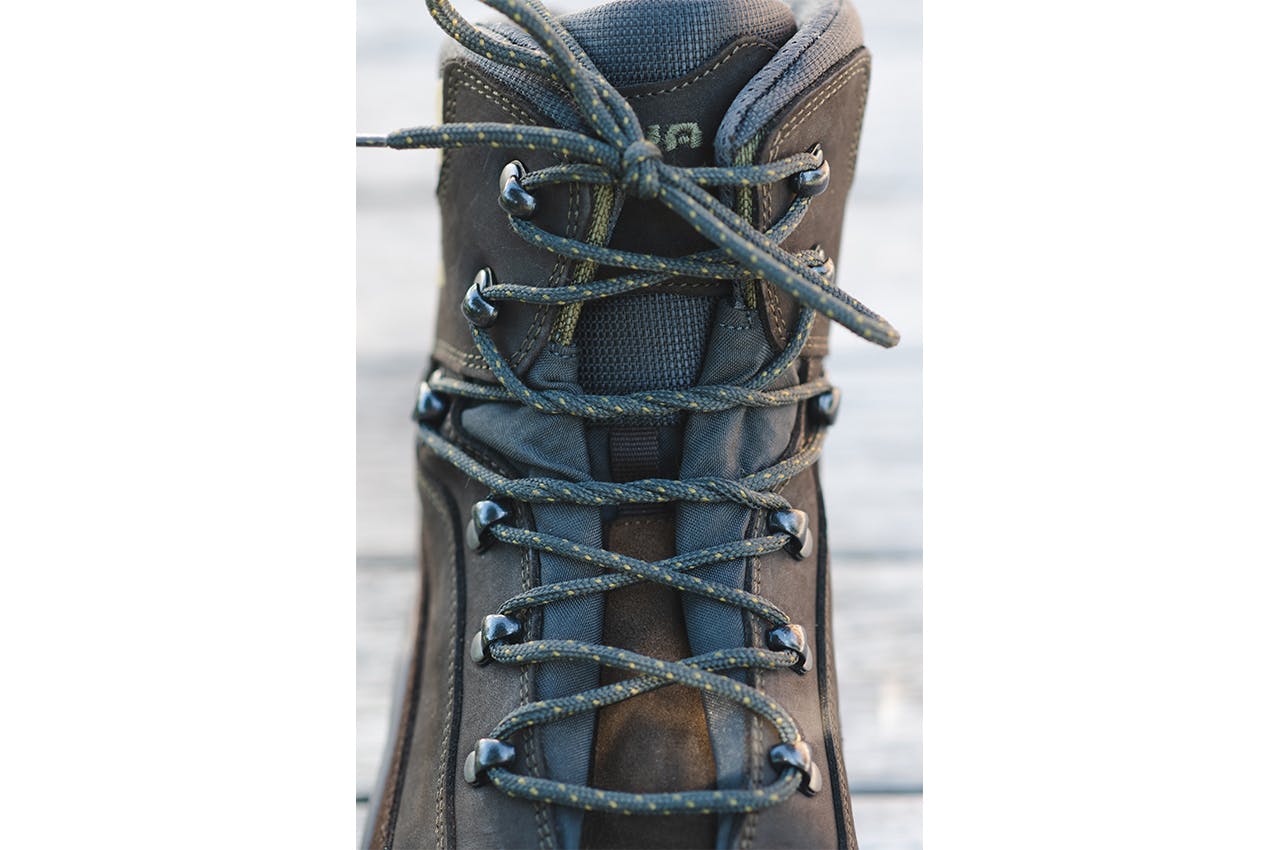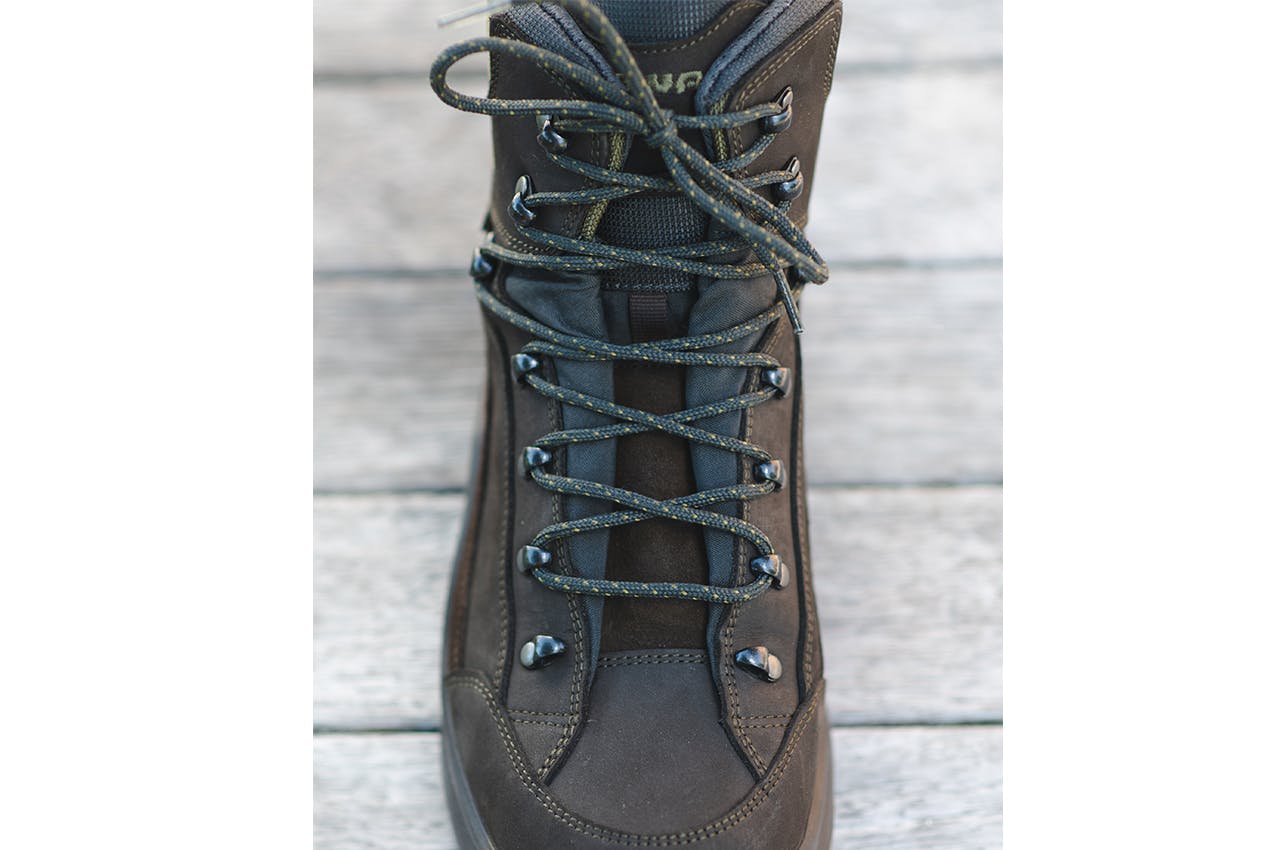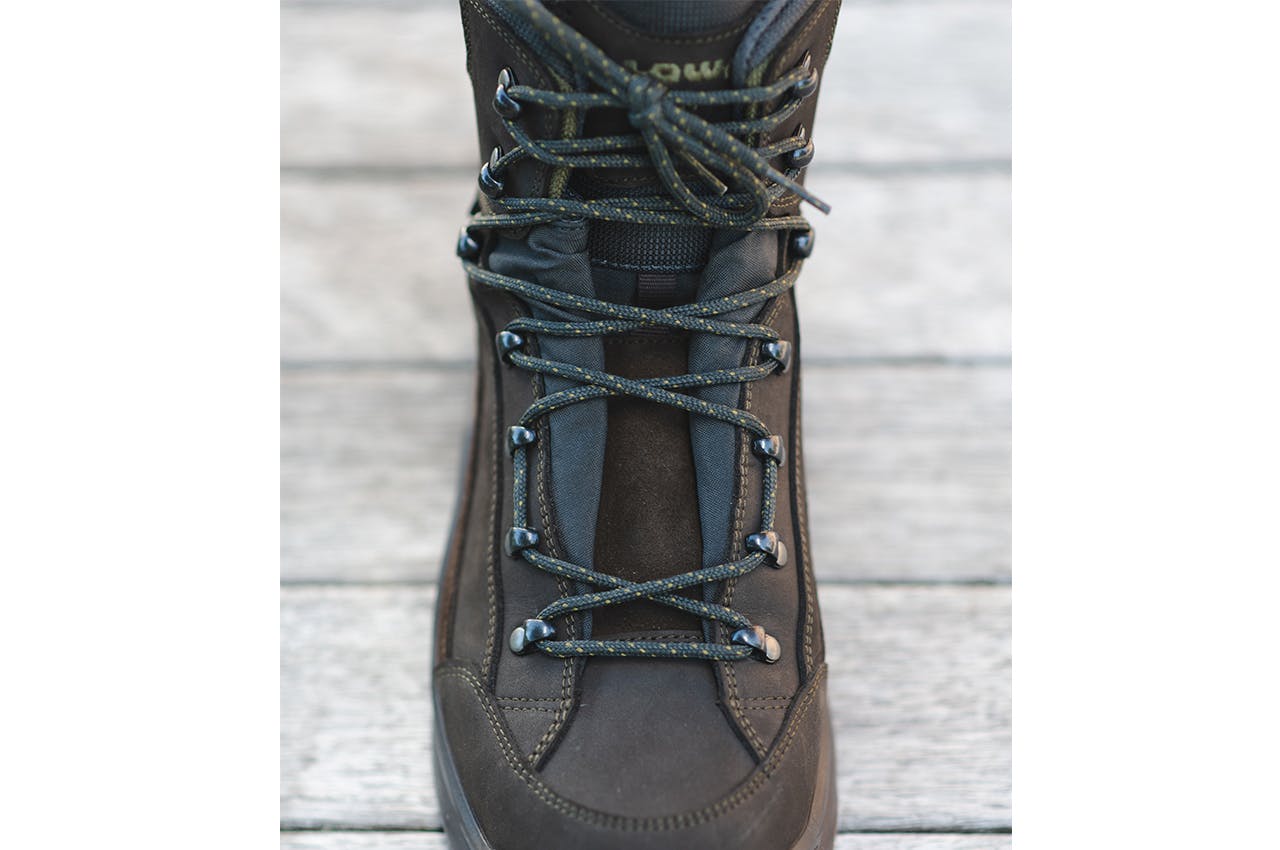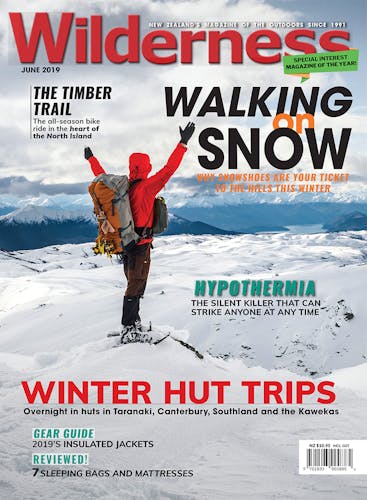Lacing techniques won’t fix a poorly fitted boot, but they can help alleviate pressure points, prevent blisters and relieve foot pain. Matthew Cattin demonstrates three alternative lacing techniques.

Lock off the knot by looping around the next pair of hooks. Photo: Matthew Cattin
Lock in your heel
If your heel is slipping, you’re in danger of provoking a blister. Minimising friction should be a top priority.
Excessive interior volume on the top of the foot may be the cause of heel slip, and this can be helped by a surgeon’s knot.
Start by pulling the laces tight across the top of the foot, and once snug, cross the laces and loop them twice around one another to lock the tension.
Pull tight, and loop the laces around the first set of hooks. Cross the laces, and repeat the surgeon’s knot.
Lock off the knot by looping around the next pair of hooks, and from here, lace normally.

Try skipping the first set of lace loops.
Too much toe tension
The widest part of the foot tends to be the base of the toes, and – especially for those with wide feet – it can be a troublesome spot of tightness.
To relieve pressure, try skipping the first set of lace loops. This will allow the toe box to expand and could provide just the right amount of breathing room for cramped toes.

Rather than crossing your laces over the tight point, open a window around it.
If it’s tight, open a window
Window lacing is an effective way of relieving pressure on the top of the foot.
First, identify the area that’s feeling tight, and unloop your laces to the pair of loops just below that point.
Now, rather than crossing your laces over the tight point, open a window around it, and thread your laces to the loops above, rather than diagonally opposite.
Extra tips and tricks
Take your time: Don’t be in a hurry to lace up your boots if you’re likely to be in them all day. Time invested in comfortable, secure lacing will save time later.
Centre the tongue: Take care to keep the tongue centred before you lace up, or pressure points may form on your lower shin and top of the foot.
Ups and downs: If you’re in for a long climb, try loosening the laces above your ankle to provide easier flex. If you’re descending, ensure your laces are tight enough to keep feet from sliding forwards.







